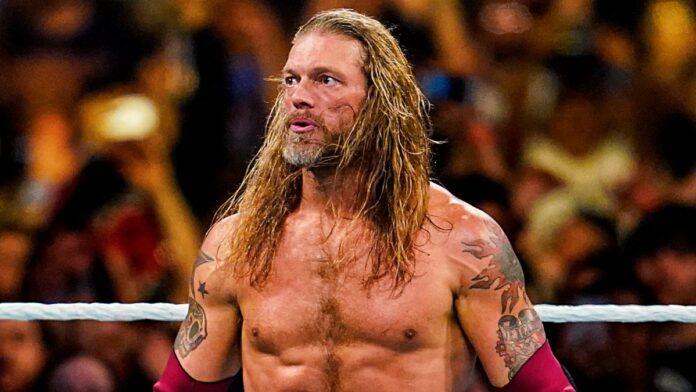
After months of speculation, Edge returned as a surprise entry in the Royal Rumble match for a tremendous reaction that will ultimately be known as one of the most memorable moments in the history of the industry. The former WWE champion abruptly retired from in-ring action in 2011 after a series of serious neck injuries and many assumed it was took risky for him to compete again. While he was away from the sports entertainment landscape, the real-life Adam Copeland worked as an actor in a variety of roles, but also had a another neck surgery to further repair the previous damage that allowed him to be medically cleared to return to action.
What does Edge’s return translate to for the WWE and the rest of the industry?
Edge, who made his WWF debut in 1998, had an interesting mystic about his lone wolf persona as he entered the ring through the crowd on a regular basis, a simple aspect that made him standout in the crowded landscape of the Attitude era. His star was built steadily over time with his involvement in the Brood stable, which saw the trio rise through the fire before they walked down the ramp. After the WCW buy out, the roster was flooded with talent as the purchase included some contracts of mostly mid-card talent under the Ted Turner banner, but Edge remained a featured performer and didn’t get lost in the shuffle. He and Christian were one of the trio of teams along with the Dudleys and Hardys that were the centerpiece of the period where tag team wrestling was one of the main draws for the company in 2000. Furthermore, after the invasion angle flopped and viewership of the genre decreased exponentially without competition in the business, Edge was actually a very important piece of the puzzle, as he was one of Paul Heyman’s “Smackdown six” in 2002 that rescued the blue brand, which was on the brink of cancellation. After the industry consolidated considerably following the WCW shut down, WWE brass made Raw their top priority, as even ratings for the flag ship show that had reached record-setting numbers just a few years previously had slipped. The Monday night show was packed with the majority of the star power in the company while Smackdown was clearly the B-show, which it has been for the majority of its existence. It’s interesting to note that Smackdown was only launched as a counter to Thunder in the late-90s and up until recently, it wasn’t given much of a major purpose in comparison to Raw.
The half dozen that Heyman used to not only keep Smackdown on the air, but to improve its numbers considerable were eventually major stars for the promotion in the years that followed. In fact, after his original neck surgery as a result of an injury in 2003, Edge returned to the Raw brand in 2004, an indication that his stock was on the rise within the organization. After his return from surgery, he spent the next year around the IC title picture before a real-life scandal unintentional provided a path further up the card. The Edge/Lita/Matt Hardy triangle made headlines on the internet and that translated to chants in the arena. Edge’s role in that real-life drama casts him as a heel on television and that heat built toward his eventual MITB cash-in for a shocking title win at New Year’s Revolution in 2006.
While Edge only held the title for three weeks before he dropped it back to John Cena at the Royal Rumble, his feud and memorable match with Mick Foley at Wrestlemania 22 solidified his status. In truth, similar to his work that kept Smackdown on the air in 2002, the majority of his main event run from roughly 2006 until his initial retirement in 2011, he was one of the main stars of the brand. As mentioned, Smackdown was considered the secondary show by WWE management during the era, and when the brand switched networks a few times throughout its history, Edge was one of the main performers that brought star power to the show. Let’s keep in mind, Edge’s move up the card in the post-Attitude era had to be based on the quality of work, he couldn’t simply ride the wave of momentum of the industry. He retained World Heavyweight title at Wrestlemania 27, which didn’t do Alberto Del Rio’s career any favors, but it allowed him to retire as champion after nearly 15 years in the company.
The second neck surgery that Edge had that put him on the path to return to the ring wasn’t just for the thrill of the chance to perform, it was also the right time for him to make a comeback from a business perspective as well. Obviously, the guy has sacrificed his body for the sport and it would be foolish to leave money on the table if he’s healthy enough to collect. According to The Wrestling Observer’s Dave Meltzer, Edge negotiated with All Elite Wrestling and considered a deal there if he wasn’t going to be cleared by the WWE medical staff. It goes without saying that Vince McMahon doesn’t want another WWE Hall of Famer on TNT, especially considering that Dynamite has usually defeated NXT in the head-to-head ratings competition. Reportedly, Edge inked a new three-year WWE deal worth $3 million a year, making it the most lucrative contract of his career for a limited schedule that will see him appear more often than Brock Lesnar, but not on a full-time basis.
The WWE has offered big money deals to sign stars in the past because they need star power and depth to the roster, regardless of potential competition, especially when they are competing for the general entertainment dollar, which became another hurdle when the business was completely exposed as a show. That being said, this deal wouldn’t have been possible without the existence of AEW because the WWE was forced to match or exceed their offer if they wanted to keep Edge under the WWE banner. Without AEW, Edge would’ve gotten a solid deal, as it would have to be enough for him to want to leave his house after a successful career that would suggest he already has financial security, but it probably wouldn’t have been to a level that will bring him $3 million a year. Let’s be honest here, a $9 million contract is something you would expect for Stone Cold or The Rock, not necessarily Edge, mostly because he’s a level underneath them in terms of star power, which is still a great spot. Don’t get me wrong, I think it’s great that Edge got a major contract and he should make as much money as he possible can, but the point I’m trying to make is, this is an example of why it’s important that AEW became an established entity with its new TNT deal because it benefits the entire industry.
As far as what Edge does during this new contract, the angle that was started with Randy Orton on Raw a few weeks ago seems like the build to a potential Wrestlemania match, which makes sense. Amazingly, at 46, Edge is probably in the best shape of his entire career so who knows what he does throughout the rest of the year? The product needs the star power, but how Edge is used is key to how much of an effect he will have on the ratings. Considered he inked a multi-year deal, he shouldn’t be there as just a way to get others over, but at the same time, the company continues to depend on acts from the past to generate any type of buzz, with Goldberg being the most recent example on this week’s Smackdown. Again, at 46, Edge isn’t prepared to be the top draw for the next five years for the promotion, but the circumstances of the industry allowed him to cash-in on a major contract. Outside of the scope of the on-screen product, his return is another major example of how important competition is in the industry.
What do you think? Comment below with your thoughts, opinions, feedback and anything else that was raised.
Until next week
-Jim LaMotta
E mail [email protected] | You can follow me on Twitter @jimlamotta







